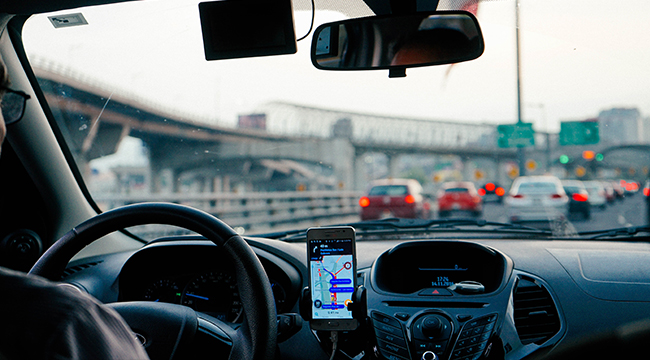
Despite the fact that ride-share giant Uber was founded only 10 years ago, it’s hard to conceive of a life without being able to call a car from your phone. But in spite of our collective reliance on ride-sharing, drivers for Uber and Lyft are asking that you refrain from using the app for the time being. They’re striking, and the protest over pay and conditions kicked off early today, May 8th.
Ten cities across the country and several international locations are holding actions this Wednesday, including demands that customers log off of their apps for 24 hours to show support for those striking. So why are Uber and Lyft drivers striking and how will it affect your commute? We break it down.
What’s happening?
Spearheaded by Rideshare Drivers United, drivers for Uber, Lyft, and Juno started a 24-hour strike at midnight on May 8th. This comes on the eve of Uber’s initial public offering (IPO), which values the company at roughly 90 billion dollars. Similarly, Lyft went public at 24 billion last month. Ten U.S. cities — Boston, New York City, Philadelphia, Washington D.C., Atlanta, Chicago, San Francisco, and Los Angeles — are participating in the strike, along with international cities like London, Montreal, Melbourne, Sydney, and more.
While most of America was sleeping, the global labor action got its start at 7 a.m. local time in London, where the boycott will last until 4 p.m. Actions such as a picket line at the Los Angeles International Airport (LAX) started at noon PST.
On top of the multi-city boycott, people have gathered at Uber headquarters to protest.
"May 8th is a day of awakening! We have sent a message…we're not scared of them, this is just the beginning!" #UberLyftStrike #UberShutDown pic.twitter.com/gPIimZYGFU
— Sarah Jaffe (@sarahljaffe) May 8, 2019
now talking about @NYTWA members moving into Uber and Lyft and the union organizing yellow cab drivers alongside app drivers #UberLyftStrike pic.twitter.com/HyoJ1pypa6
— Sarah Jaffe (@sarahljaffe) May 8, 2019
There are drivers, representatives from labor unions, and allies.
What is the strike about?
Uber and Lyft drivers in NY just announced they’ll be striking on May 8, same day LA drivers already said they’ll go on strike pic.twitter.com/ehRuZd750z
— Bryce Covert (@brycecovert) May 3, 2019
According to the BBC, Uber said in a statement that their drivers are “at the heart of our service.”
That, however, is not how the striking drivers feel at any of the big ride-share companies. They feel that their job security has plummeted, along with their wages.
A large part of the protest has to do with the fact that ride-share companies insist that drivers aren’t technically employees but rather independent contractors. That means they don’t have the same protections or benefits as full-time employees (such as health-care or a set wage). They can also have their accounts deactivated without warning or recourse, which could spell financial disaster for full-time drivers.
On top of the job insecurity, according to the Washington Post, part and parcel of their protest has to do with Uber’s pay transparency, or lack thereof. The ride-share company changed its algorithm when they introduced upfront pricing. Per the Post, “unlike a traditional taxi meter system, which pays drivers a set portion of the passenger fare, drivers are instead paid according to time and mileage regardless of the ride’s price, leading to consternation about the gulf between the companies’ cut and theirs.”
What do drivers want from Uber and Lyft?
Drivers in different cities have different specific asks, but all drivers are demanding three things: job security, pay transparency, and guaranteed wages. Breaking it down to the nitty-gritty, however, drivers in L.A., for example, are demanding a 10 percent cap on the companies’ commission, a minimum hourly wage, and “fare breakdowns on passenger receipts that show the companies’ take.” Further, drivers in New York are asking for the right to appeal account deactivations and for warnings to prevent “sudden deactivations.”
What can I do to support the striking drivers?
✊🏼🚨Global Uber/Lyft Strike Today. Uber drivers don’t have even the most basic workers’ rights. Billions go the bosses while the drivers get poverty pay. DO NOT take an Uber or a Lyft today. Walk, take a bus, carpool w/ a friend, scuba in a canal. #UberLyftStrike #UberStrike🚨✊🏼
— rob delaney (@robdelaney) May 8, 2019
If you want to support the strike, the biggest thing you can do is not cross the picket line. In this case, that means not using an app to call a car today. Drive, walk, take public transport, find an old fashioned taxi service, stay home, and otherwise work it out. If this feels next to impossible and ruins your day, just think about how important ride sharing has become to you, and then support the drivers (who have been ferrying you around) get a living wage. As this is a strike, it’s important to not only show solidarity (and show it publicly so the companies know it’s not just the drivers who will walk, but their customers), but it’s essential, if you support the drivers’ movement, not to give any money to the companies they’re trying to change with their only tools: their voices and time.






